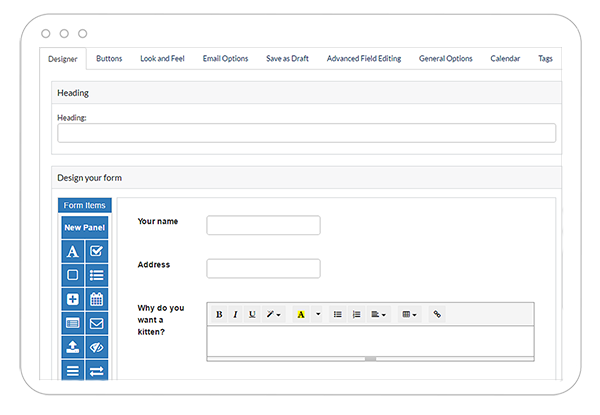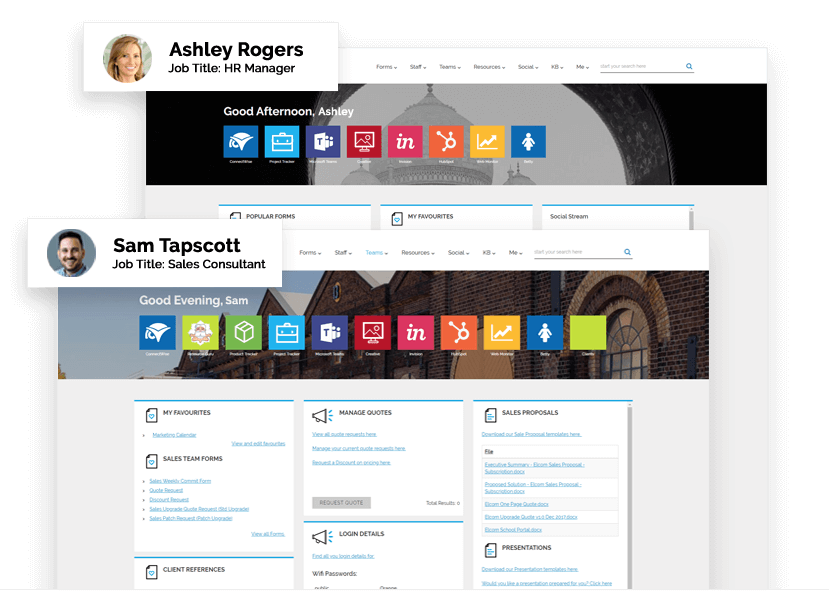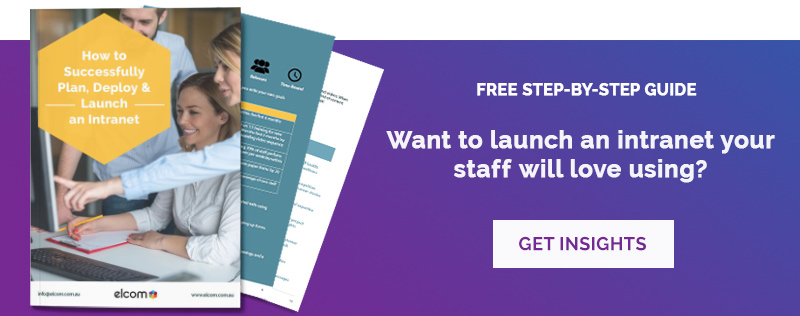When you’re planning a new intranet project, providers of intranet CMS software will be quick to point out all the bells and whistles that their product will provide. But at its core, an effective intranet consistently requires just a handful of essential components.
Be sure to look for these seven key functions to ensure you’re planning a truly useful intranet for your organisation.
1. Structured and reliable content management
Your intranet should be a secure, central repository for your organisation’s information so teams can easily access that data – everything from HR policies to advertising and content strategies, to documents for daily work.
It’s naturally important to be able to access this data when you need to, so search for corporate intranet software with features such as keywords, metadata and version control. When creating an intranet content management strategy, keep in mind that it's helpful to be able to restrict and allow access to specific information as needed.
2. Smooth integration with your existing tools and systems
.jpg)
Most organisations who come to us already have tools, apps and systems already in place as part of their day to day operations. This can include document management solutions like SharePoint or Dropbox, resource planning, customer relationship management, accounting, marketing tools and industry-specific applications.
A key component of intranet best practice guidelines, is to choose software where you can integrate essential systems into your intranet using smooth integration or a free API for custom development. This allows you to tailor your intranet system in line with employee feedback, while also ensuring your system makes proper use of key intranet trends.
Related reading: [Blog post] Document Management Best Practices
3. Communication and collaboration tools
The importance of collaboration in today's workplace cannot be denied. Effortless internal communication can transform productivity and efficiency within your organisation and as such, collaboration and communication platforms and software are absolutely essential in an intranet.
Look for a platform that enables private and public social collaboration in team or project workspaces, as well as a staff directory that shows organisational structure so employees can find the expertise they need.
Your intranet should make it easy to notify the whole organisation of events and new content, and to personalise access and data display for each user type.
Related reading: [Blog post] How to Drive Collaboration in Your Digital Workplace
4. Easy forms and workflows

The power of forms and workflows continues to grow as more organisations digitalise manual, paper-based processes.
Forms are a big part of intranets, whether it's a form to request annual leave or professional development training. A form builder is easiest to use when it has a drag and drop interface that is used to create secure forms in a matter of minutes. To minimise the length of a form, some form builders allow you to add panels, which show additional fields and information based on a field option users select.
When mapping your business requirements to your intranet platform, prioritise creating effective workflows that are easy to set up and properly integrate with your communication tools. Confusing email threads and document versions are a thing of the past when you have an automated approval process as part of your intranet. Duplicate content can be eliminated, and significant time is saved.
5. Truly helpful and responsive search
You and your teams must be able to find the information you need, and a modern intranet CMS should have enterprise-level search as standard.
Check that you can search across departments with real-time results, and that you can make the most of Best Bets to recommend important documents, events and information for certain searches.
Federated search is another valuable search feature, allowing you to add external websites, RSS feeds and file servers to your search results.
6. The ability to personalise the experience

Personalisation is a key part of the recommended intranet design guidelines that ensures staff will be presented with resources that are truly relevant and useful to them, while customisation allows the employee to tailor their own display to suit their preferences.
The more granular the options, the better. For example, you might wish to show personalised displays and navigation tools that are appropriate for the employee’s department, location, services, function or projects that they’re currently working on.
Related reading: [Blog post] For Personalised Intranet Experiences, Start Right Here
7. Effective security and data protection
Adequate security measures must be in place in order to protect the data, sensitive information and ultimately the people who are involved with your business.
To avoid devastation by privacy breaches or cyber threats, search for an intranet solution that offers pin or password protection, data backup, two-factor authentication, log-in records, and the ability to restrict sensitive information to certain users.
For example, Forty Winks, Australia's largest independent bedding retailer, have full control over who has access to their intranet and at what level, with the their platform's security permissions feature. This enables them to essentially deliver 7 different personalised intranet views for different stakeholders, with board members having access to all content on the intranet, down to franchise store staff having limited access to information regarding their employment, the store and general Forty Winks company information.
You’ll certainly be glad down the track that these security features are built right in.
Sure – extra company intranet features and functionality can improve your intranet experience, but at its essence the platform must connect teams and employees, make data and documents more accessible with greater control, smooth out your workflows and make day-to-day processes far simpler.
If your intranet provider focuses on these core benefits, then you’ll be well equipped to develop your intranet with confidence!
